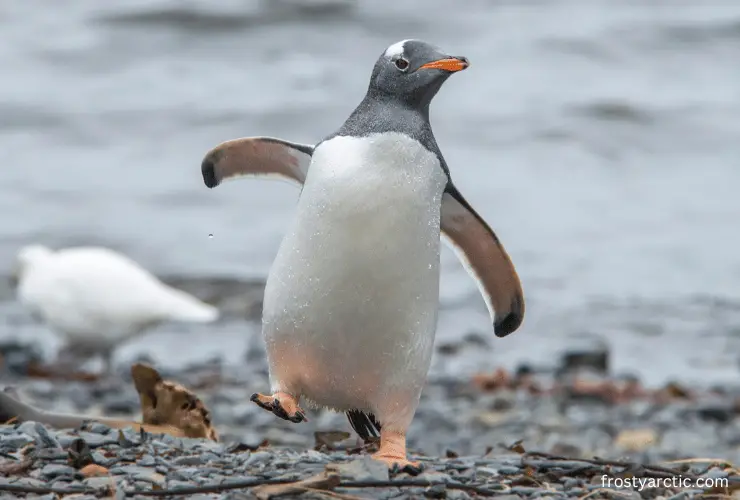The short legs of penguins would take your thinking more towards apt swimming and diving. It is the rudder-like feet and short, strong legs of the penguins which make them smart swimmers. However, the pendulum-like body movement, which seems funny, is also due to the short legs of the penguins.
Streamlined is a word you may attribute more to the body of a penguin. If you look closely at the structure of a penguin, you could have a mixed sketch of a bird who is both a swimmer and a flier.
Let us have a more detailed discussion on the running and walking mechanism of the penguins to know the reason why they have short legs.
Do Penguins Have Short Legs?
Yes, to the outside, they do have short legs, but by studying the anatomy of the penguins, you could know hidden facts. Following is the evidence to let you know that they have short legs.
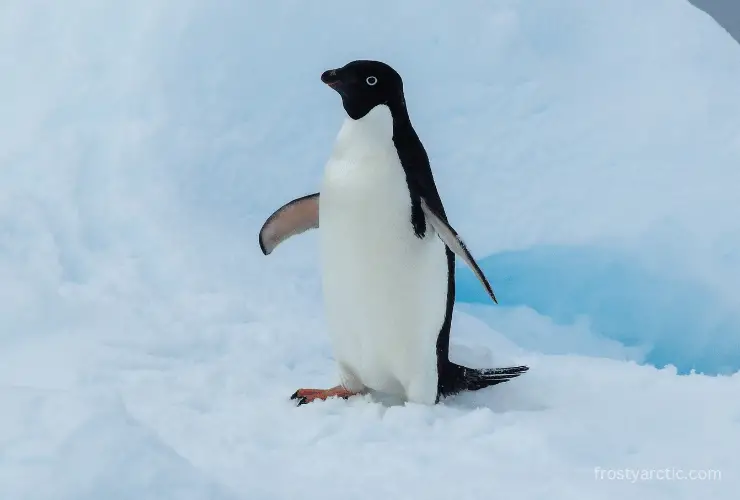
- You can only see the webbed feet with big claws at the bottom of the penguin’s body. Knees or legs height will not be seen with the naked eye.
- The funny inefficient or you say the pendulum-like movement of the penguin, highlights the fact that they have short legs.
- Notice the average rate of walking per hour of the penguins and you will see that they are more into swimming than walking.
Why Are Penguins’ Legs Short and Strong?
Streamlined is the word you can have in your mind when you talk about the body structure of penguins. Penguins have to be apt swimmers, dive underwater, grab food and come back to shore.
For this, their body needs to be like fish. There are reasons why they have short legs. Short legs help them prevent heat loss and this is more helpful when they are incubating eggs in winter.
Their legs, though, give them an inefficient and awkward walk, apparently, but this exactly is not true.
A biology student researcher Timothy Griffin and his co-researcher Rodger Kram worked on it, and this is what they discovered as something very different:
Waddling is basically to cut energy loss and the inefficient walk is only because of the big feet and short legs.
Watch the video below to see how they walk from side to side.
Waddling Movement
The waddling of penguins actually energy rather than losing it. When they move to and fro, the energy is stored as the sides are not exactly bending and moving.
This potential energy changes into kinetic energy and drives it forward when the penguin rocks back from the vertical position.
The sides are swinging like a pendulum. This momentum which gets them going even without a push saves energy at the rate of 80%.
You would sometimes see them bending or leaning forward to keep up the balance using the gravitational pull.
Does A Penguin Have 4 Legs?
The legs and flippers of penguins work together for their body movement. Be it swimming or walking on ice, the legs, which are tucked in the long shirt-like skin of the penguins, act as the best part. In water, the flippers help to swim fast.
On the ground, the flippers work as the hanging part of the pendulum to keep the balance. Telling you all this is to explain that the walking legs are 2, but all kinds of movements have a contribution of a total of 4 limbs, not 2.
Are Penguin Legs Actually Long?
Yes, it is true. Imagine a little boy wearing his elder brother’s shirt to the ankles. What is seen are the feet. This is how our ice walker dresses up.
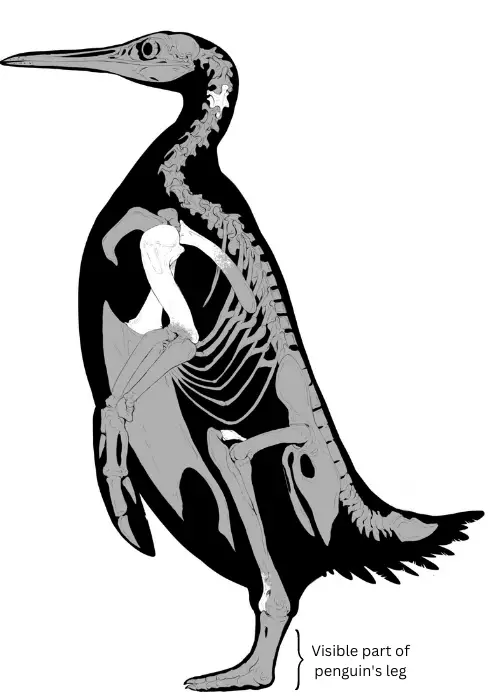
The anatomy of the penguin tells you that their legs are tucked up inside the body and what comes out on the ground are webbed feet and short, stout legs.
The skeleton sketch of the penguin’s body would show the knees bent under the skin. So, if you say that penguins have long legs, you should explain the 4 parts of the leg: femur, knee, tibia and fibula.
It is that the parts aren’t visible the way they are in other common animals. The long legs of the penguin have evolved in such a way as to support their swimming, ice walking and incubation process.
What Is Special About Penguin Feet?
There is multi-purpose fulness of the feet that make the penguins’ feet special.
Here are some points to prove the statement:
- Penguins have wide, flat feet with claws to grip the ice when walking. Along with the balancing feature like a pendulum, the flat feet help them walk like a pro on ice.
- The feet become the rudders in water and help them steer in different directions. They are covered by tails while swimming and act like rudders.
- Penguin feet don’t freeze as they control blood flow and keep them at a certain temperature. Here is an image to explain how the inner mechanism helps them reduce heat loss to let them stay warm standing on ice.
Counter Current Heat Exchanger in Penguin’s Leg
Arteries supplying warm blood to the feet break up into many small vessels that are closely allied to similar numbers of venous vessels bringing cold blood back from the feet. Heat flows from the warm blood to the cold blood, so little of it is carried down the feet.
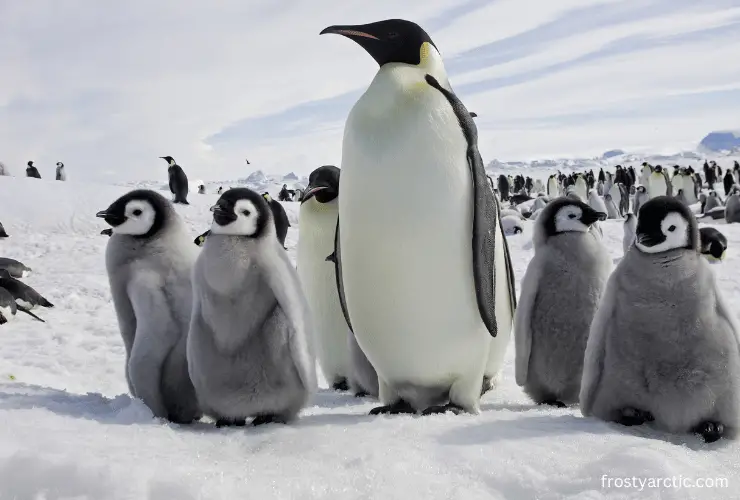
In severe winter, the blood flow to the penguins’ feet drops low; this reduces the change of temperature between feet and the land surface. So, the heat loss due to the conduction process gets very low. Source
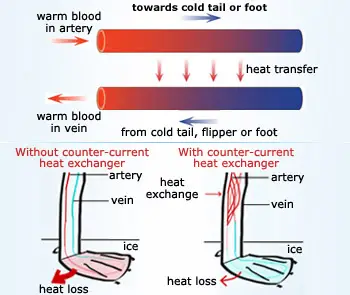
Do Penguins Have Knees? Why Don’t They Have Knees?
Oh well, it seems confusing. They do or they don’t? Yes, they do have knees! Oh, but you can’t see them! So, they don’t have knees? Nah!!
Let us peep in closer! Just keep an eye on the hit words I Use. The legs of penguins are extended inside the body with a complete structure like that of ours.
The complete four parts of the limb. But yes, they are tucked in, most likely in a bent position. They act as propellers to help the penguins move forward in the air and water. While climbing rocks, the knees help them hop and climb well.
Why Do Penguins Have Long Claws?
The claws of penguins are located at the far back end of the body, and they cannot pull back. They do have special claws to support their walk on ice.
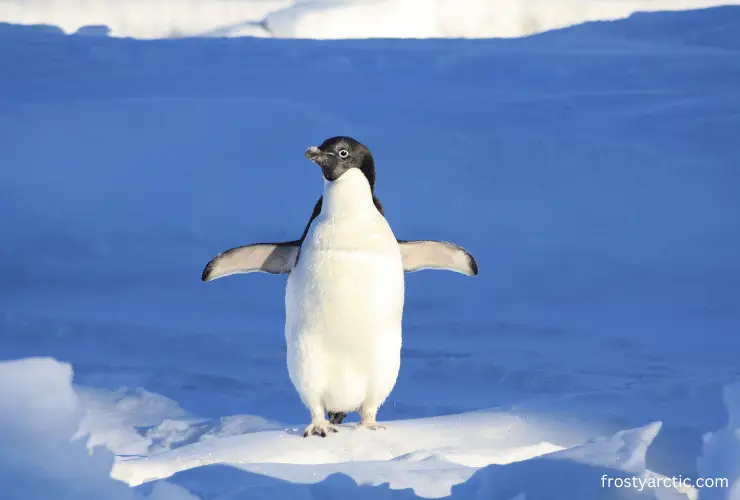
These long claws help them grip the ice well. Another good purpose of the claws is to dig burrows in ice for nesting.
While climbing or walking, the long claws pierce into the ice and help the penguins cling to the surface.
FAQs
What are penguin legs called?
The legs of penguins on which they stand are proper legs like humans. They have flippers which also are the front limbs or legs. They use them for swimming.
How long are emperor penguins’ legs?
As the emperor penguins are the tallest among all penguins, they have long feet up to 4.13 inches high and 2.75 inches wide. These help in carrying the heavy round body well.
Do penguins get tired of walking?
Generally, penguins have high stamina for walking for miles on ice. Their swinging body with striking balance helps them move forward.
This may look funny, but they can walk long distances. However, when they get tired, they slide their bellies on the ice.
Conclusion
These flightless birds have great capacities to do super tasks to survive in harsh winters all their life. The apparently short legs are actually multi-tasking for them as they help them swim, walk, keep balance and grab food.

